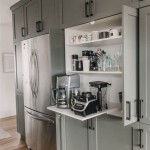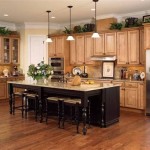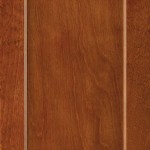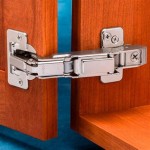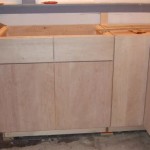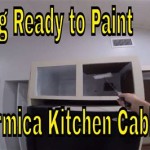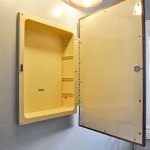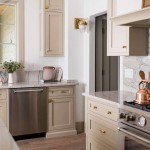Where Do You Put Knobs On Kitchen Cabinet Doors? A Comprehensive Guide
Choosing the optimal placement for knobs on kitchen cabinet doors is a seemingly minor detail that significantly impacts both the functionality and aesthetic appeal of the entire kitchen. While it might seem straightforward, several factors influence the ideal positioning, including the cabinet door style, size, overall kitchen design, and personal preferences. An understanding of these elements leads to a more ergonomic and visually pleasing kitchen space.
The placement of knobs isn’t arbitrary. Poor placement can lead to awkward reaching, difficulty opening cabinets, and an unbalanced visual appearance. Correct knob placement enhances usability, improves the flow of movement within the kitchen, and contributes to a cohesive and polished design. This guide provides detailed insights into the various considerations for determining the best knob placement for different cabinet door styles and kitchen layouts.
Understanding the Impact of Door Style and Characteristics
The style of the cabinet door is a primary determinant of knob placement. Different door styles, such as slab doors, shaker doors, raised panel doors, and glass-front doors, necessitate different approaches to knob positioning. Each style presents unique visual and structural considerations that guide the placement process.
For slab doors, which are characterized by their flat, unadorned surface, centering the knob is a common and often aesthetically pleasing choice. However, depending on the overall design and the size of the door, a slightly off-center placement can also be effective. The critical consideration is maintaining a balanced visual weight. On taller slab doors, placing the knob slightly higher than the vertical midpoint can make the door easier to open, especially for individuals of shorter stature. Conversely, on lower cabinets with slab doors, a slightly lower placement can be beneficial.
Shaker doors, with their distinctive five-piece construction consisting of a flat center panel surrounded by a frame, offer more defined areas for knob placement. The most common practice is to place the knob on the frame, typically in the lower corner for upper cabinets and the upper corner for lower cabinets. This placement utilizes the structural integrity of the frame and provides a secure fixing point. The exact distance from the corner is usually determined visually, aiming for a balanced look that complements the door's proportions. Consistency in placement across all shaker doors is crucial for a unified aesthetic.
Raised panel doors, which feature a raised central panel, often present a more ornate design. While the placement principles remain similar to those for shaker doors – utilizing the frame for attachment – the decorative elements of the raised panel should be considered. Avoiding any interference with decorative moldings or detailing is essential. The knob should be positioned to complement, rather than detract from, the door's aesthetic features.
Glass-front doors require extra consideration, as drilling directly into the glass is not an option. The knob must be attached to the frame surrounding the glass panel. The thickness and construction of the frame are critical factors. The chosen knob should be compatible with the frame's material and dimensions, ensuring a secure and stable attachment. Visual alignment with the other cabinet doors in the kitchen is especially important for glass-front cabinets, as the contents of the cabinets are visible, and any discrepancies in knob placement will be more noticeable.
Standard Measurements and Guidelines
While the door style significantly influences knob placement, general guidelines and standard measurements provide a helpful starting point. These measurements can be adjusted based on specific door dimensions and personal preferences, but they offer a reliable foundation for achieving a balanced and functional result.
For upper cabinets, a common recommendation is to place the knob 2.5 to 3 inches from the bottom corner of the door. This measurement provides a comfortable grip and allows for easy opening of the cabinet. For lower cabinets, the knob is typically placed 2.5 to 3 inches from the top corner of the door. These measurements are not absolute and can be modified slightly based on the door’s overall height and width. A wider door might benefit from a slightly larger offset to maintain visual balance.
When multiple cabinets are placed adjacent to each other, maintaining consistent knob placement is crucial for creating a cohesive and visually appealing kitchen. Using a measuring tape or a template can ensure that the knobs are positioned at the same height on all doors. This consistency is particularly important for cabinets that are frequently used, as it promotes a smooth and intuitive user experience.
For cabinets with drawers located above the doors, the knob placement on the doors should align visually with the drawer pulls or knobs. This alignment creates a unified design and enhances the overall aesthetic harmony of the kitchen. If the drawer pulls are horizontally oriented, the door knobs should be placed to create a visually balanced relationship. The goal is to achieve a sense of order and intentionality in the design.
Consideration should also be given to the thickness of the cabinet door. Thicker doors require longer screws to ensure a secure attachment of the knob. It is essential to select screws that are appropriate for the door's thickness to prevent the knob from loosening or becoming unstable over time. Using a screw that is too long can also potentially damage the interior of the cabinet, so it is important to carefully measure the door's thickness and choose the correct screw length.
Ergonomic Considerations and Accessibility
Ergonomics plays a critical role in determining the optimal knob placement. The placement should facilitate easy and comfortable access to the cabinets for all users, regardless of their height or physical abilities. Taking into account the typical reach and movement patterns of individuals using the kitchen is essential for creating a functional and user-friendly space.
For individuals with limited mobility or those who use wheelchairs, lower cabinet knobs should be placed in a position that is easily accessible. A slightly higher placement on lower cabinet doors can make them easier to reach, as it reduces the need to bend down excessively. Similarly, upper cabinet knobs should be placed at a height that is within comfortable reach, avoiding the need to stretch or strain to open the cabinets.
The size and shape of the knob itself can also impact ergonomics. Knobs that are too small or have a slippery surface can be difficult to grip, especially for individuals with arthritis or other hand impairments. Choosing knobs that are appropriately sized and have a textured surface can improve grip and make the cabinets easier to operate. Larger knobs provide a more substantial surface to grasp, while textured surfaces prevent the hand from slipping.
Consider the swing direction of the cabinet doors when determining knob placement. The knob should be positioned on the side of the door that is opposite the hinges. This placement allows for easier opening of the door and prevents the hand from bumping into the adjacent cabinet or wall. If the door swings to the left, the knob should be placed on the right side of the door, and vice versa. This fundamental principle ensures smooth and intuitive operation of the cabinets.
In kitchens used by individuals with diverse needs, a combination of knob styles and placements might be necessary to accommodate different preferences and abilities. For example, some cabinets could be fitted with knobs that are easy to grip, while others could be fitted with handles that offer better leverage. The goal is to create a kitchen that is accessible and comfortable for everyone who uses it.
When retrofitting existing cabinets with new knobs, it is important to consider the existing hardware holes. If the new knobs have a different screw hole configuration than the old knobs, it might be necessary to fill the existing holes and drill new ones. Using wood filler to fill the old holes and carefully sanding the surface can create a seamless finish. Before drilling new holes, it is essential to accurately measure and mark the desired locations to ensure precise and consistent knob placement.
Visualizing the final appearance before drilling any holes is also a good practice. Using painter's tape to temporarily attach the knobs to the doors can help to determine the optimal placement and ensure that the knobs are aesthetically pleasing and ergonomically sound. This step allows for adjustments to be made before committing to a permanent placement.
Ultimately, the best knob placement is one that combines aesthetic appeal, functional efficiency, and ergonomic comfort. By carefully considering the door style, standard measurements, and the needs of the users, it is possible to achieve a kitchen that is both beautiful and practical. The extra time spent planning and executing the knob placement will be well worth the effort in the long run.

How To Place Cabinet Knobs Pulls

How To Place Cabinet Knobs Pulls

Cabinet Hardware Installation Guide At Cabinetknob Com

Learn How To Place Kitchen Cabinet Knobs And Pulls Cliqstudios

How To Install Knobs On Cabinet Doors

How To Choose Between Knobs Or Pulls On Kitchen Cabinets

Kitchen Cabinet Handle Placement Dos And Don Ts Living Letter Home

How To Place Cabinet Knobs Pulls

How To Install Cabinet Handles Straight Without Losing Your Mind
Cabinet Hardware Placement Where To Put Knobs And Handles Vevano
Related Posts

